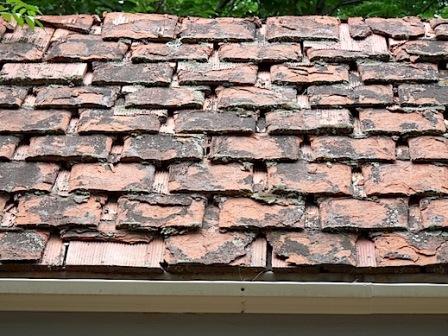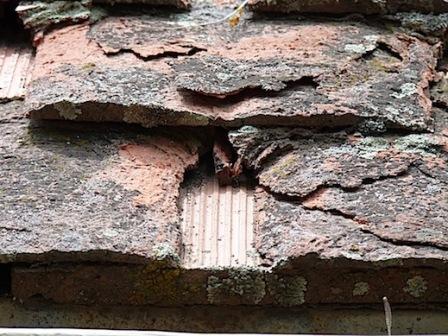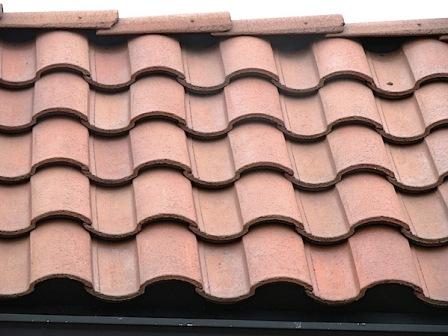Mastering Roof Inspections: Tile Roofs, Part 5
by Kenton Shepard and Nick Gromicko, CMI®
The purpose of the series “Mastering Roof Inspections” is to teach home inspectors, as well as insurance and roofing professionals, how to recognize proper and improper conditions while inspecting steep-slope, residential roofs. This series covers roof framing, roofing materials, the attic, and the conditions that affect the roofing materials and components, including wind and hail.
Clay Tiles
Clay tiles are another roofing material that has been used for a long time. They’re manufactured using a casting process. Molds are filled with a fine, wet clay, and then baked in a kiln until vitrification takes place.
Vitrification
Vitrification happens when the various minerals in clay change and bond chemically to form a single, dense, non-porous tile. Full vitrification turns clay into a glass-like material. For clay tile, the vitrification process is key to long-term durability. Incomplete vitrification will result in the finished tiles being more porous, which means they’ll absorb moisture more easily.
Porosity
When moisture in tiles freezes, it expands, causing delamination and surface deterioration or spalling. Low-quality tiles are more porous and more vulnerable to freeze damage.
Glazing is sometimes applied to the top surface of tiles for decorative effect and to help reduce moisture adsorption.
Both clay and concrete tile installed in areas subject to freezing temperatures should comply with ASTM manufacturing standards designed to prevent freeze damage. You won’t know whether tiles comply with any standards unless documentation is provided.
This is just background information; you are not required to confirm compliance with standards.
Density
The density of the tile is an indication of its quality; high-quality tiles are more dense than low-quality tiles. Tile density is determined by the fineness and purity of the clay, and the duration and temperature of the firing process.
Incomplete Vitrification


These photos show the long-term results of incomplete vitrification, resulting in moisture absorption and freeze damage.
Clay Tile Standards
ASTM International (formerly, the Association for Testing and Materials) provides the following standard for clay tiles.
ASTM C1167, “Standard Specification for Clay Roof Tiles,” addresses material characteristics, performance requirements, and dimensional tolerances for roof tiles. The standard provides a classification by grade for durability and a classification by type for appearance.
A roof tile’s resistance to freeze damage is classified as one of three grades:
- Grade 1 provides resistance to severe frost action;
- Grade 2 provides resistance to moderate frost action; and
- Grade 3 provides negligible resistance to any frost action.
Profiles of tiles are classified by type:
- Type I tiles are high-profile tiles with a rise-to-width ratio greater than 1:5;
- Type II tiles are low-profile tiles with a rise-to-width ratio less than or equal to 1:5; and
- Type III tiles are all other tiles, including flat.
Clay Tile Profiles
The three most common clay tile profiles are mission, Spanish and flat.

A mission tile, a Type I, also called a barrel tile, is a two-piece system with pans and covers. Mission tiles may be straight or tapered.



A variety of Spanish clay tiles, Type II, is also called S-tiles, and have been manufactured over the years.

You’ll also see different types of flat clay tiles that are Type III. Flat tiles may have interlocking edges or may butt other tiles in the same course.

You may need to look closely to confirm that you’re looking at clay tiles.

Sometimes, it will be obvious.


Be sure to look at tile closely and carefully. From a distance, you might mistake metal tiles for clay tiles…

**************************************************
For the best inspector in your neighborhood, visit www.InspectorSeek.com
Take InterNACHI’s free, online Roofing Inspection Course
Mastering Roof Inspections
Roofing Underlayment Types
Inspecting Underlayment on Roofs
Fall-Arrest Systems
Roofing (consumer-targeted)
More inspection articles like this

